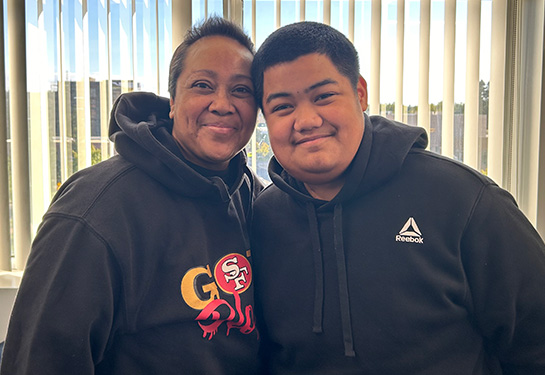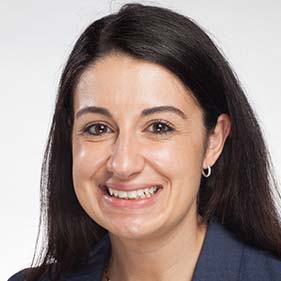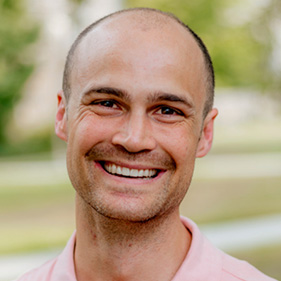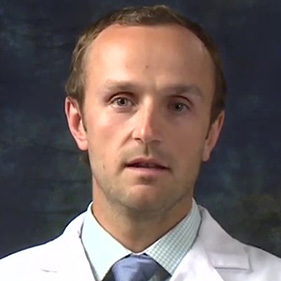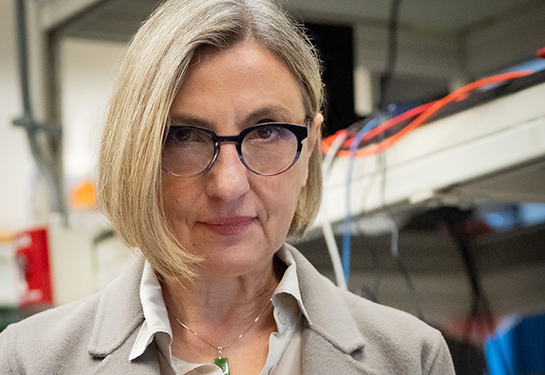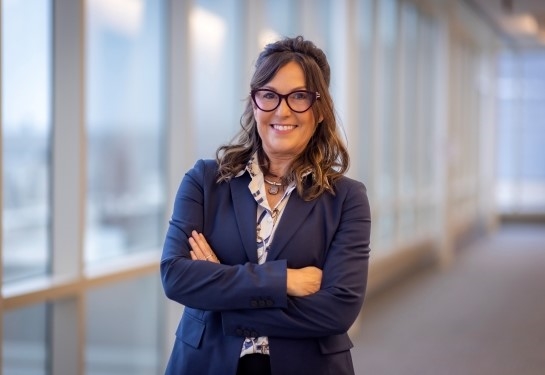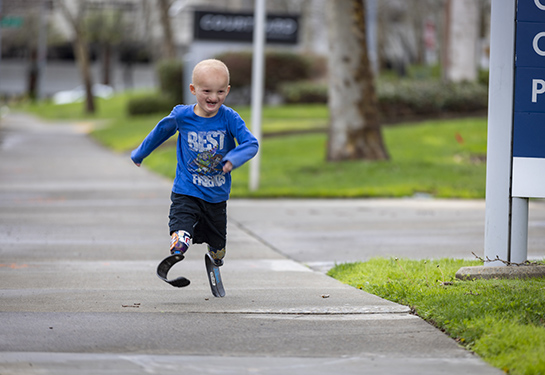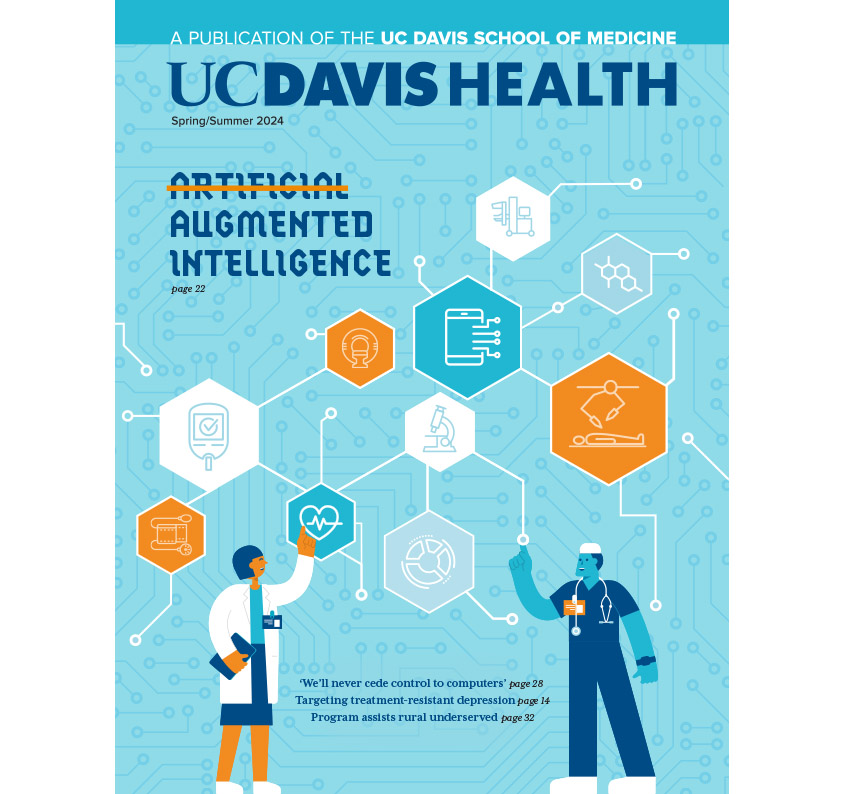‘I’m just thankful to have teeth’: UC Davis Health surgeons rebuild patient’s jaw in a day
Two years ago, during a dentist appointment, Israel Lomat learned he needed to have his wisdom teeth removed. In addition, a troubling X-ray showed a void in the bone in his jaw.
Concerned, his mother Fokikovi Leger took him to the doctor, who delivered startling news.
Lomat had a tumor in his jaw, which was growing through and destroying his bone. The tumor was benign, but if he did not have it removed, the situation would only get worse. Lomat was just 14 years old.
“I was shocked and nervous,” remembered Lomat. “I thought I was just going to get my wisdom teeth taken out and now I was going to need to have my jaw removed.”
One day jaw restoration
Lomat’s dentist referred him to UC Davis Health. His care team included Marianne Abouyared, head and neck surgeon; Darin Johnston, oral and maxillofacial surgeon; and William Love, director of UC Davis dental services.
The multidisciplinary team determined that Lomat was a suitable candidate for a novel jaw restoration procedure ― a surgery that had never been done in California north of San Francisco. It would allow Lomat to receive a jaw replacement complete with dental implants in one surgery instead of several procedures over a year or more.
With the jaw restoration procedure, the team removes the tumor, places a bone implant ― typically a piece of the patient’s fibula (lower leg bone) ― along with prefabricated dental prosthetics, in a single procedure. The surgery is long, but it allows the patient to immediately have their jaw and teeth restored.
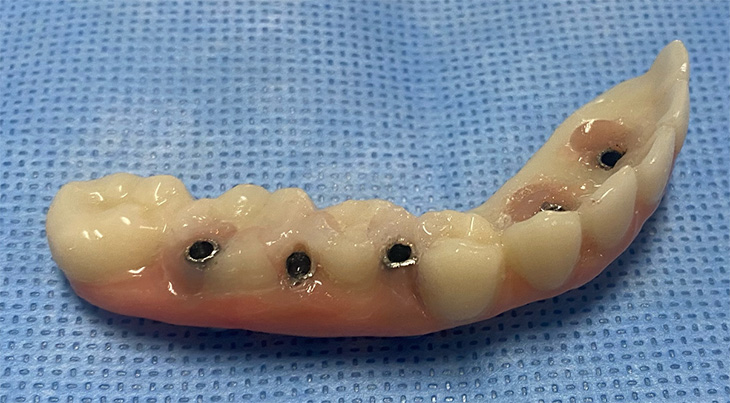
There is extensive planning for this type of procedure. The team uses CT scans of the jaw and fibula and an intraoral scan of the patient’s teeth to precisely guide the amount of bone to remove. They use the scans to create 3D-printed custom guides, which help them cut the piece of fibula into the shape of the jaw and place the dental implants. They also fabricate a titanium plate to secure the transplanted bone in place.
“This innovative procedure offers our patients a new level of care that prevents them from needing multiple surgeries and immediately restores the form and function of their jaw,” said Abouyared. “This effort takes a multidisciplinary team and is only possible due to the collaboration of our incredible team of surgeons and dentists here at UC Davis.”
This innovative procedure offers our patients a new level of care that prevents them from needing multiple surgeries and immediately restores the form and function of their jaw.”—Marianne Abouyared
Benefits of jaw restoration
Without the jaw restoration procedure, Lomat’s jaw surgery would have taken a year or more to be completed. He would have gone months without teeth, affecting his quality of life and ability to have a regular diet.
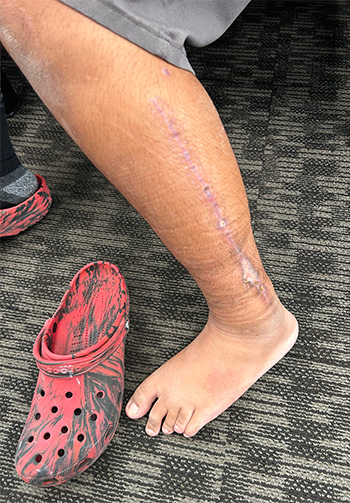
“I was really happy to get everything done all at once,” said Lomat. “I’m just thankful to have teeth so I can eat normally and not feel awkward in social situations.”
Lomat is fortunate. For many others needing jaw replacement surgery, dental implants are not even an option. If a cancerous tumor is treated with radiation after reconstruction, the new jawbone often needs many more months to heal before surgery can be considered. As a result, patients can have their disease treated and their jawbone reconstructed but may never have teeth again.
The cost for dental implants can also be a hindrance for some patients.
“Dental implants and the initial dental prosthesis are often not covered by medical insurance if they are not placed during the initial procedure,” Johnston explained. “For many patients, this is a huge barrier to them being able to get teeth back, which ultimately affects their quality of life.”
Dental implants and the initial dental prosthesis are often not covered by medical insurance if they are not placed during the initial procedure. For many patients, this is a huge barrier to them being able to get teeth back, which affects their quality of life.”—Darin Johnston
Recovery and results
Lomat was up and walking the day after his procedure. He was eating and talking normally within a few weeks.
His providers are proud of what they accomplished for the teenager.
“We’ve become excellent at taking things apart in medicine but have struggled with fully restoring a patient who is suffering from such an impactful disease,” said Love. “Many of these patients will attest to not being able to close this chapter in their life as they manage life without teeth. We now can finally celebrate clearing that hurdle and hope that in doing so, help more patients in the future.”
Many of these patients will attest to not being able to close this chapter in their life as they manage life without teeth. We now can finally celebrate clearing that hurdle and hope in doing so to help more patients in the future.” —William Love
Now, a few months after his surgery, Lomat is back in school. He’s feeling normal again.
His entire family is grateful to everyone at UC Davis Health ― from his surgeons to the dentist, to each nurse, technician and staff member Lomat encountered.
“Everyone we worked with was incredibly efficient and clearly communicated all the details for Israel’s procedure,” his mother said. “That personal touch made such a difference in the care we received and made us feel really taken care of.”
Learn more about our otolaryngology expertise.


